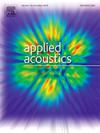Research on the multi-signal DOA estimation based on ResNet with the attention module combined with beamforming (RAB-DOA)
IF 3.4
2区 物理与天体物理
Q1 ACOUSTICS
引用次数: 0
Abstract
Direction of Arrival (DOA) estimation based on deep neural networks has been extensively studied recently, but multi-signal DOA estimation has not been sufficiently investigated. The strong mutual interference between signals emitted by multiple sources in different directions in multiple DOA leads to the reduction of detection accuracy, which limits the application in multi-object scenarios. In multi-signal DOA estimation, a residual network (ResNet) incorporating efficient channel attention module could significantly enhance the signal separation and localisation capabilities of the system. Therefore, this paper presents a multi-signal DOA estimation system based on ResNet with the attention module and beamforming (RAB-DOA). The system receives spatial signals through an array of detectors and uses a linear constrained minimum variance (LCMV) beamforming algorithm to optimize signal directivity and suppress interference. Phase adjustment is then performed during the scanning process to enhance the signal in the scanning direction and suppress interfering signals in other directions. Finally, the signals are binary classified using ResNet with an efficient channel attention module to obtain multi-signal DOA estimation results. Experiment results show that the detection accuracy and precision of the proposed algorithm are excellent, especially at low SNRs in spite of multiple interfering signals.
求助全文
约1分钟内获得全文
求助全文
来源期刊

Applied Acoustics
物理-声学
CiteScore
7.40
自引率
11.80%
发文量
618
审稿时长
7.5 months
期刊介绍:
Since its launch in 1968, Applied Acoustics has been publishing high quality research papers providing state-of-the-art coverage of research findings for engineers and scientists involved in applications of acoustics in the widest sense.
Applied Acoustics looks not only at recent developments in the understanding of acoustics but also at ways of exploiting that understanding. The Journal aims to encourage the exchange of practical experience through publication and in so doing creates a fund of technological information that can be used for solving related problems. The presentation of information in graphical or tabular form is especially encouraged. If a report of a mathematical development is a necessary part of a paper it is important to ensure that it is there only as an integral part of a practical solution to a problem and is supported by data. Applied Acoustics encourages the exchange of practical experience in the following ways: • Complete Papers • Short Technical Notes • Review Articles; and thereby provides a wealth of technological information that can be used to solve related problems.
Manuscripts that address all fields of applications of acoustics ranging from medicine and NDT to the environment and buildings are welcome.
 求助内容:
求助内容: 应助结果提醒方式:
应助结果提醒方式:


